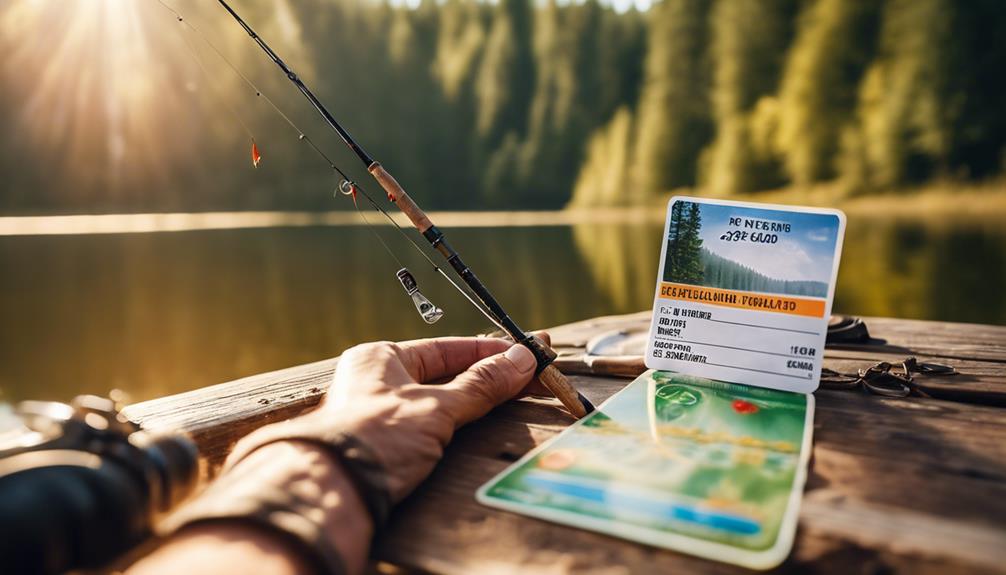Fishing is not only a popular pastime but also a fantastic way to connect with nature and enjoy some peaceful moments by the water. However, before you cast your line, it’s essential to understand how to obtain a fishing license. In this blog post, we’ll outline the steps you need to take to secure your fishing license, including the requirements, types of licenses available, and tips for a hassle-free process.
Understanding the Importance of a Fishing License
Obtaining a fishing license is not just a legal requirement in most states; it also plays a crucial role in conservation efforts. Fishing licenses help fund wildlife management and conservation programs that maintain fish populations and protect aquatic habitats. By purchasing a fishing license, you contribute to the sustainability of fishing resources, which ensures that future generations can also enjoy this beloved activity. Therefore, understanding how to obtain a fishing license is vital for responsible anglers.
Researching Local Regulations and Requirements
Before you can obtain a fishing license, it’s essential to research the specific regulations and requirements in your state or country. Different regions have varying rules regarding fishing licenses, including age requirements, residency status, and fishing seasons. Many states have online resources where you can find this information, including the cost of licenses, available fishing seasons, and any specific regulations regarding the type of fishing allowed (e.g., freshwater or saltwater). Familiarizing yourself with these details will help you navigate the licensing process more effectively.
Types of Fishing Licenses Available
When learning how to obtain a fishing license, it’s crucial to understand the different types of licenses available. Most states offer several options, including:
1. Resident Licenses: Available to individuals who live in the state for a specified period. These licenses are typically less expensive than non-resident options.
2. Non-Resident Licenses: For anglers who do not live in the state but wish to fish there temporarily.
3. Short-Term Licenses: Ideal for occasional anglers, these licenses may be valid for a few days or weeks and are perfect for vacations or short trips.
4. Specialty Licenses: Some states provide licenses for specific types of fishing, such as saltwater fishing, trout fishing, or even licenses for children or seniors.
Understanding the various types of licenses can help you choose the one that best suits your fishing needs.
The Application Process: Step-by-Step Guide
Now that you know the types of licenses available, let’s break down the step-by-step process for how to obtain a fishing license. The application process can vary slightly by state, but generally, it includes the following steps:
1. Visit the Official State Website: Start by visiting your state’s wildlife or fisheries department website. This is where you’ll find the most accurate and up-to-date information regarding fishing licenses.
2. Select the Appropriate License: Based on your research, choose the type of fishing license that fits your residency status and fishing plans.
3. Fill Out the Application: Complete the online application form or download a physical copy to fill out. Be prepared to provide personal information such as your name, address, date of birth, and social security number in some cases.
4. Pay the License Fee: After filling out the application, pay the required fee. Payment methods may include credit/debit cards for online applications or checks/money orders for mailed applications.
5. Receive Your License: Once your application is processed, you will receive your fishing license either electronically or by mail, depending on how you applied.
Tips for a Smooth Application Experience
To ensure a hassle-free experience when applying for your fishing license, consider the following tips:
1. Gather Necessary Documents: Before starting the application, make sure you have all required documents, such as identification and proof of residency.
2. Check for Discounts: Some states offer discounts for seniors, military personnel, or disabled individuals. Be sure to check if you qualify for any discounts to save on your license fee.
3. Plan Ahead: If you’re planning a fishing trip, apply for your license well in advance. Processing times can vary, especially during peak fishing seasons.
4. Stay Informed: Regularly check for updates or changes to fishing regulations in your state. This includes understanding any new rules regarding catch limits, seasonal restrictions, and other essential information.
Understanding Fishing License Fees
When exploring how to obtain a fishing license, it’s crucial to understand the associated fees. Fishing license costs can vary significantly depending on your location, age, and the type of license you’re applying for. Generally, resident licenses are cheaper than non-resident ones, and short-term licenses are less expensive than annual licenses. Some states may also charge additional fees for specific permits, such as those needed for fishing in certain bodies of water or for targeting specific species. Be sure to budget accordingly and check for any hidden fees that might apply during the application process.
Consequences of Fishing Without a License
Fishing without a valid license can lead to serious consequences, including hefty fines and potential legal action. Most states have strict enforcement policies regarding fishing without a license, and game wardens actively monitor fishing areas. If you’re caught fishing without a license, you may be subject to fines ranging from a few hundred dollars to over a thousand, depending on the severity of the infraction. Additionally, repeat offenses can lead to more severe penalties, including suspension of fishing privileges. To avoid any legal troubles, always ensure you have a valid fishing license before heading out to fish.
Conclusion: Enjoying Responsible Fishing
In conclusion, obtaining a fishing license is a critical step for anyone looking to enjoy the sport of fishing responsibly. By understanding how to obtain a fishing license, the different types available, and the importance of adhering to local regulations, you can ensure a smooth and enjoyable fishing experience. Remember, fishing is not just about the catch; it’s also about respecting the environment and contributing to conservation efforts. So, gather your gear, secure your license, and head to the water with confidence, knowing you’re fishing legally and responsibly. Happy fishing!
